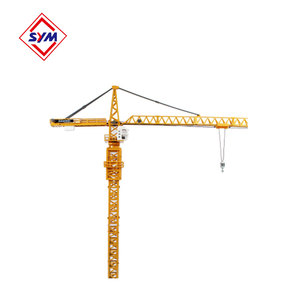Tall Construction Equipment: An Overview
Tall construction equipment plays a vital role in the construction industry, designed to handle tasks at great heights and challenging angles. This category of machinery includes cranes, aerial lifts, and scaffolding systems that allow hard-to-reach tasks to be completed safely and efficiently. In industries where vertical construction is prevalent, the demand for specialized tall construction equipment is immense, as it facilitates various operations, from high-rise building projects to intricate renovations.
Types of Tall Construction Equipment
Understanding the different types of tall construction equipment is crucial for selecting the right tools for specific tasks. Here are some primary examples:
- Cranes: Used for lifting and moving heavy materials vertically, cranes can be classified into tower cranes, mobile cranes, and hanging cranes, among others.
- Aerial Work Platforms (AWPs): These include scissor lifts and boom lifts, ideal for providing personnel with a safe workspace at height.
- Scaffolding Systems: Essential for creating temporary structures that allow workers to access heights safely, various designs suit different project needs.
- Forklifts: While typically used for horizontal lifting, tall forklifts can be designed to access elevated storage and construction setups.
Function and Feature of Tall Construction Equipment
Tall construction equipment is characterized by its multifunctionality and innovative features that enhance safety and efficiency in high-altitude tasks. Key functions and features include:
- Height Accessibility: Designed to reach incredible heights, ensuring that construction projects are executed safely and ably.
- Load Capacity: Most equipment can handle substantial weights, allowing for the lifting and maneuvering of large materials seamlessly.
- Safety Mechanisms: Features such as outriggers, stabilizers, and harness systems are built-in to enhance user safety during operations.
- Versatile Functionality: Equipment can often be equipped with various attachments, such as buckets, trays, or forks, making them suitable for different tasks.
Applications of Tall Construction Equipment
The applications of tall construction equipment are vast, spanning various sectors within the construction and maintenance industries. Here are some typical scenarios of use:
- High-Rise Construction: Essential for erecting skyscrapers and tall buildings, these machines allow for the quick and safe delivery of materials to elevated areas.
- Maintenance Work: Ideal for inspections and repairs on tall structures such as bridges, towers, and communication buildings.
- Events and Festivals: Used to set up large displays, stages, and lighting in venues where permanent structures are typically not available.
- Warehousing and Storage: Frequently employed in warehouses to retrieve products stored at great heights, maximizing storage space efficiency.
Advantages of Tall Construction Equipment
The use of tall construction equipment offers several advantages that enhance overall productivity and safety on job sites:
- Increased Efficiency: By enabling access to considerable heights, these machines reduce the time required to complete construction projects.
- Improved Safety: Enhancements in safety technology minimize accident risks associated with height work, protecting both operators and workers on-site.
- Cost Savings: Using the right equipment minimizes labor costs and material waste due to precise operations and efficient logistics.
- Adaptability: Tall construction equipment is versatile and can be used for various tasks—beyond just construction, including maintenance, servicing, and installation work.







































